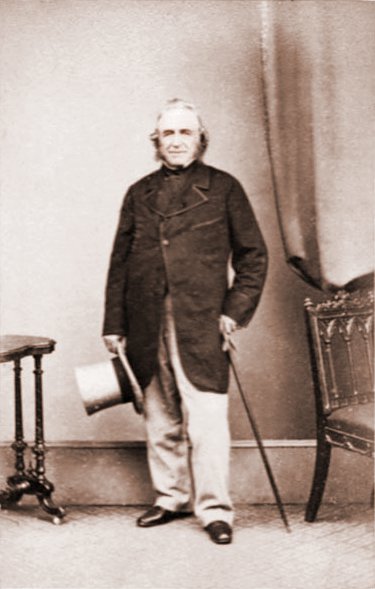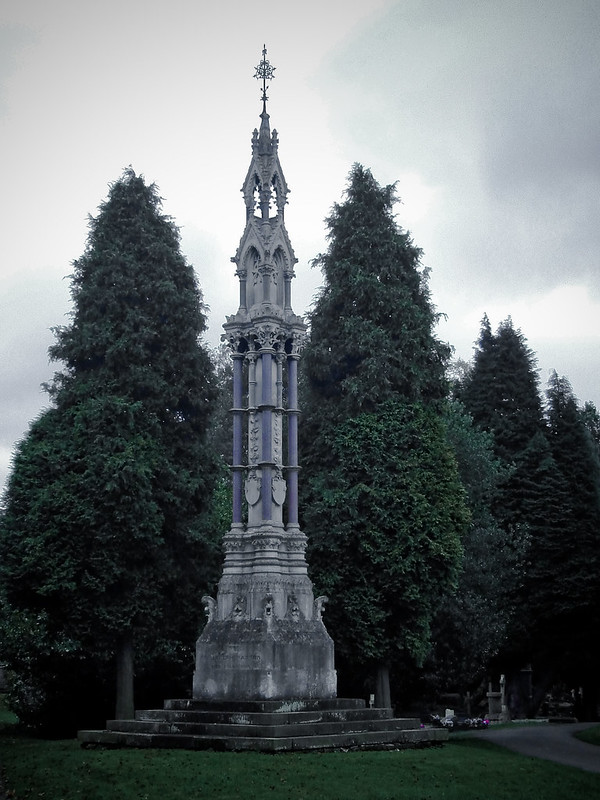
In June 2024, Historic Coventry Trust staged a Paxton Day at London Road Cemetery, also known these days as Paxton’s Arboretum. Peter Walters explores the great man’s connections with Coventry.
Superintendent of the gardens at Chatsworth at the age of just 23 and the extraordinary innovator who turned the Derbyshire estate into one of the wonders of the gardening world, Joseph Paxton was already a national figure when his career took a turn towards Coventry.
In 1843, he designed a park for Birkenhead, near Liverpool, now acknowledged as the world’s first municipal park. And it was this commission that alerted a newly-formed Coventry Cemetery Committee when in 1845 they decided that the intolerable state of affairs regarding burials in the city could no longer continue. All of Coventry’s churchyards were full and digging in them actually brought human remains to the surface – prompting ‘fearful and revolting scenes of desecration’, according to the Coventry Herald.
The committee focused on a disused and water-logged quarry close to the London Road and virtually begged Paxton to turn it into a place of beauty. He’d delivered his plans by March 1846 and in November 1847 London Road opened as one of the first garden cemeteries in this country.
While it is Paxton’s design that produced such a startling landscape full of unusual and interesting trees, it was probably his assistant George Stokes, who went on to marry his eldest daughter Emily, who designed the chapels.
Four years later, in 1851, the Board of Health declared ‘in beauty and convenience this cemetery is superior to any other that has been formed.’
By then, Paxton had already moved on to the crowning glory of his career, the Crystal Palace. Following a chance meeting in London, he came up with the initial designs within nine days and created what is still the greatest building in glass ever made, to host the Great Exhibition, which opened in 1851.

At this point Joseph Paxton was knighted and the following year was asked to stand as an MP in Nottingham but turned the invitation down. Two years later, however, when a group of Coventry businessmen, including some of those he’d worked with on the cemetery, approached him with the same request, he agreed.
Canvassing in the autumn of 1854 was ferocious, so much so that Paxton claimed he’d bruised his hands shaking so many. He stood on a reform platform, supporting the extension of the vote to all householders and advocating stronger local government and Free Trade.
His maiden speech in the House of Commons on December 18, however, was not about Coventry but the failures of logistics in the Crimean War, a subject on which he held passionate views.
The detail of Paxton’s years as one of two Liberal MPs for Coventry are confined to often sketchy newspaper reports. He clearly never had a home here and we can’t be absolutely certain where he stayed when he was in the city, although anecdotal evidence points to the home of the wealthy Masser family in Longford.
Their house, later the Old Post Office, and still standing, was at that time surrounded by gardens and it was said that Paxton designed a garden for them as a thank-you.
It was reported that he attended balls at Drapers Hall, that he mediated in a dispute between the owner of Wyken Colliery and his colliers, that he was on the supervising committees for both the new Coventry Art School and the Coventry and Warwickshire Hospital.
He was instrumental in a scheme to level large areas of Hearsall Common, employing out-of-work weavers, and he was keen to encourage gardening in the city, bringing down flowers and shrubs from his beloved Chatsworth to display at horticultural shows held at the Bull Field (or The Butts as we now know it).
Twice re-elected, Paxton was popular in Coventry, but he did have his critics.
When the Cobden Treaty cut the ground from under Coventry’s silk ribbon industry, almost overnight, in 1860, Paxton and his fellow Liberal MP Edward Ellice were accused by the Conservative-supporting Coventry Standard of failing to make the case for the weavers in the House of Commons and for not taking their plight seriously enough.
There was probably some truth in that, as both MPs were ardent Free Traders who strongly opposed protectionist policies. Yet in the end it was Ellice and Paxton who personally presented a petition on behalf of Coventry weavers to Queen Victoria, securing her support, and a donation.
In April 1865, suffering from rheumatism and heart and liver problems, largely brought on by over-work, he told his constituency agent that he would not be contesting the next general election, later in the year. He died two months later, at the age of 63, and was buried at Edensor on the Chatsworth estate.
One final note of controversy attached itself to Joseph Paxton in Coventry. Three years later, in 1868, when plans were being laid for a memorial to him in the London Road Cemetery, there were some who questioned why Paxton, MP for a decade, should have a monument to him, while Ellice, who had represented the city for forty years, on and off, got nothing.
Fortunately, the controversy did not derail the proposal to commemorate one of the most extraordinary figures to shape Victorian Coventry. And we have his elegant memorial still.

